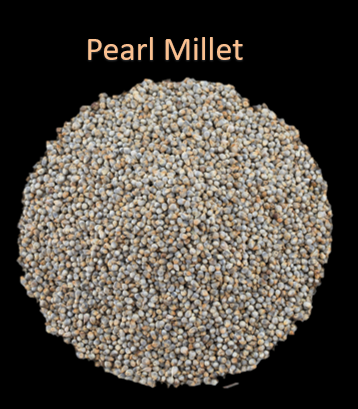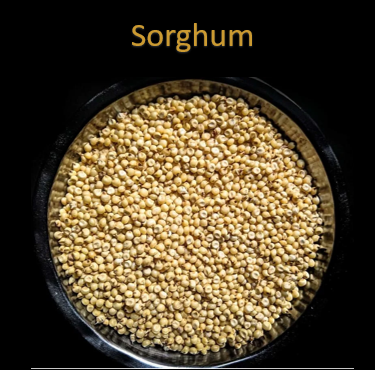
Millets are coarse grains with a high nutritional value. The term millet is applied to various grass crops whose seeds are harvested for food or feed. They are rich in protein, vitamins, minerals, and fibers. They have been cultivated since ancient times. Millets were once grown as traditional crops in several countries like China, Japan, India, Nigeria, Zimbabwe and several other Asian and African countries.
The United Nations declares 2023 the International Year of Millets. The Year of Millets provides an opportunity to highlight the nutritional, economic, and environmental benefits of millets. It also promotes their production, consumption, and trade at a global level. Focus on millets can create a more sustainable and inclusive food system that benefits both people and the planet. Finance Minister of India, Nirmala Sitharaman, described millets as ‘Shree Anna’ means the best among all the food grains. ‘Shree’ means divine grace and ‘Anna’ means food grain.
Health Benefits of Millets:
- Millets are rich in protein and fiber, two essential nutrients for weight loss.
- They have low glycemic index, which lowers blood sugar fluctuations.
- They are beneficial for building immunity.
- They reduce risk of high cholesterol, strokes and maintain blood pressure.
- The magnesium content in millets can help with migraines and asthma.
- They are rich in B-complex vitamins such as niacin and folic acid.
- They help with digestion as they contain fiber.
- Millets have antioxidant properties.
- Millets are also gluten-free, making them an excellent choice for individuals with gluten sensitivity or celiac disease.
Types of Millets:
There are many different types of millets. Some of the more common varieties include: Pearl millet, Foxtail millet, Finger millet, Barnyard millet, and Sorghum.
Pearl Millet (Pennisetum glaucum): Names in different languages: Bajra (Hindi), Kambu (Tamil), Bajri (Marathi, Gujarati), Sajje (Kannada), Kambam (Malayalam), Sajjalu (Telugu)
Pearl millet is primarily cultivated in Africa and India. Pearl millet is rich in protein, fiber, iron, magnesium, and phosphorus. The fiber in Pearl millet is harder for our body to break down. Because of this, it does not cause a spike in blood sugar that refined grains can cause. Stabilizing blood sugar helps to regulate insulin and hence lowers the risk of diabetes.
It is often ground into flour and used to make flatbreads, porridges, and fermented beverages. It can be used to make bajra khichdi, bajra dosa, bajra roti, bajra atta laddoo, bajra upma, bajra vegetable soup and many more.

Foxtail Millet (Setaria italica): Other names: Kangni (Hindi), Kang or Rala (Marathi), Thinai (Tamil), Kakum (Gujarati), Navane (Kannada), Thina (Malayalam), Korra (Telugu).
Its name is due to resemblance of inflorescence with fox’s bushy tail. Foxtail millet has small, golden grains and a mild, nutty flavor. It is a versatile grain that can be cooked like rice, used in salads, or ground into flour for baking. Foxtail millet is rich in dietary fiber, protein, and essential minerals like iron and calcium. Foxtail millet can be used to make kheer, fried rice, upma, lemon rice, curd rice, pulao and many more dishes.

Finger Millet (Eleusine coracana): Ragi (Hindi/Tamil/Kannada), Nachni (Marathi), Mandia (Oriya), Kelvaragu (Malayalam), Ragulu (Telugu). It is one of the most commonly used millet in Indian cuisine.
It is characterized by its small, finger-like grains and reddish-brown color. Finger millet is highly nutritious and is particularly valued for its high calcium content, making it beneficial for bone health. It is also rich in fiber, protein, iron, and other minerals. The glycemic index of finger millet is high. So, diabetics should use it in moderation. Wide varieties of recipes can be made from ragi flour or grains like roti, dosa, idli, laddoo, cookies, biscuits, mudde, upma, malt, porridge, halwa, paratha, semiya, and khichdi.

Recipes containing Ragi:
- Mixed Flour & Spinach Roti
- Ragi Recipes (Idli, dosa, appe, uttappa)
Barnyard Millet (Echinochloa spp.): Sanwa or sama (Hindi), Bhagar (Marathi), Kuthiraivali (Tamil), Jhangora (Bengali), Oodalu (Kannada), Odalu (Telugu) or shyama.
It is a small-seeded millet. It has a mild, slightly sweet flavor and a texture similar to rice. Barnyard millet is gluten-free and rich in fiber, iron, and phosphorus. Due to its quick cooking time, it is a convenient option for quick meals. It is often used as a substitute for rice in various dishes, including dosa, idli, Pongal, khichdi, upma, savory pancake etc.
Recipe: Barnyard Millet Dosa

Sorghum (Sorghum bicolor): Jowar (Hindi), Jwari (Marathi), Cholam (Tamil), Juvar (Gujarati), Jola (Kannada), Cholam (Malayalam), Jonnalu (Telugu)
It comes in different varieties, including white, red, and black. Sorghum is a good source of energy, dietary fiber, protein, and antioxidants. It can be ground into flour, popped like popcorn, or used in the production of sorghum syrup and gluten-free beer. Examples of recipes are: jowar roti, dosa, upma, porridge, thalipeeth, paratha, and many more.

Jowar recipes:
- Poha Thalipeeth
- Cabbage-Kale Paratha
- Jowar (Sorghum) Flour Upma
- Jowar Puffs (Lahya) Chivda
- Pith Poli
Kodo Millet (Paspalum scrobiculatum): Kodra (Hindi, Marathi), Varagu (Tamil), Kodon (Gujarati), Harka (Kannada), Arikelu (Telugu).
It is known for its hardy nature and ability to grow well in dryland areas with poor soil conditions. It is gluten-free and has a low glycemic index, making it suitable for people with dietary restrictions or diabetes. It is rich in dietary fiber, protein, and essential minerals like iron and calcium. Kodo Millet can be used to prepare various dishes such as upma, porridge, pulao, and dosas.

Proso Millet (Panicum miliaceum) : Barri (Hindi, Marathi), Panivaragu (Tamil), Chena (Bengali), Baragu (Kannada), Pani Varagu (Malayalam), Varigulu (Telugu).
It has small, round grains and a mild, nutty flavor. Proso Millet is versatile and can be used in both sweet and savory dishes. It is often cooked like rice, used in pilafs, salads, soups, or ground into flour for baking. Proso Millet is gluten-free and a good source of dietary fiber, protein, and essential minerals like magnesium and phosphorus.
 Little Millet (Panicum sumatrense) : Kutki (Hindi, Marathi), Samai (Tamil), Shavan (Gujarati), Same (Kannada), Chama (Malayalam), Samalu (Telugu).
Little Millet (Panicum sumatrense) : Kutki (Hindi, Marathi), Samai (Tamil), Shavan (Gujarati), Same (Kannada), Chama (Malayalam), Samalu (Telugu).
It is a small-grain millet cultivated in India and other parts of Asia. It has a mild, nutty flavor and is gluten-free. Little Millet is a nutritious grain that is rich in dietary fiber, protein, and essential minerals such as iron and magnesium. It is often used as a substitute for rice and can be cooked as a pilaf, added to soups, or used in porridges. Little Millet is also used to make dosas, idli, and other traditional dishes.

Buckwheat, Amaranth (rajgira), quinoa or Barley are not millets though they share some similarities.
Conclusion:
As we rediscover the value of ancient grains, millets have emerged as an outstanding option for a nutritious and sustainable diet. Their health benefits, and versatility in cooking make them a great choice who are motivated to improve their health. Let’s embrace millets and embark on a journey to explore the world of flavors, textures, and nourishment that these grains (Shree Anna) offer.

सभी तरह के मिलेट्स बहुत जरूरी है हर एक बॉडी के लिए। मैं स्पेशल यूज कर रही हूं क्योंकि होरमनल इंबेलेनस और लैक ऑफ़ एनर्जी फाइबर मेरे खाने में बढ़ाने के लिए।
That’s great, Archanaji! Keep it up.
Hi Savi, thanks for sharing useful information. Just noted that this was shared on Jaina Millet Mission by Sharmila Oswal. Congratulations!!!
Thank you so much, dear Smita!